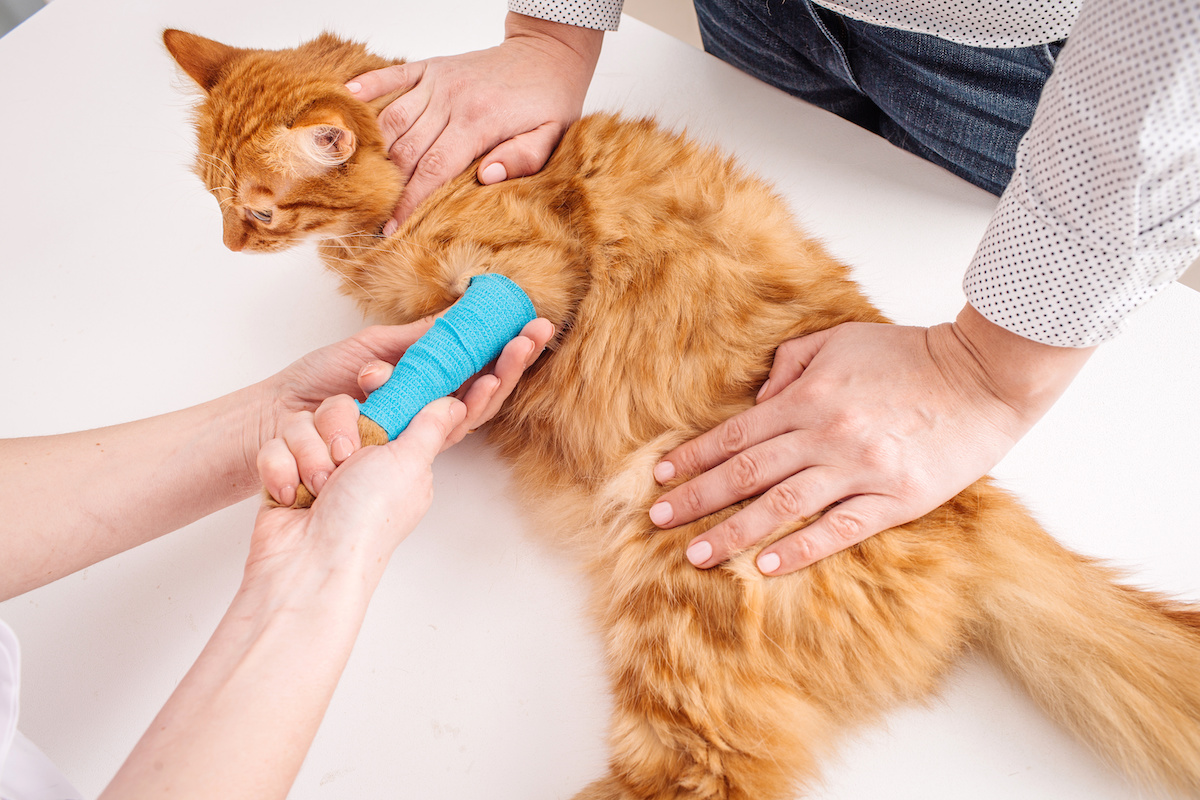Here at Animal Care Center, we encounter numerous cases of pets suffering from pain and discomfort. As a veterinarian clinic, it’s crucial to recognize the signs and address them promptly. Pet pain management is an essential aspect of veterinary care, as it helps improve the quality of life for our furry friends.
But how do you know if your pet is in pain? The truth is that cats and dogs are quite good at hiding pain. After all, their ‘job’ is to make you happy. However, pets can give signs that they are in pain and need your help.
This blog post aims to educate pet owners on the causes, signs, diagnosis, and management of pet pain and discomfort, emphasizing the importance of seeking veterinary care to ensure their pets’ health and happiness.
Importance of Recognizing and Managing Pet Pain
Ignoring or misinterpreting the signs of pain in pets can lead to long-term health issues. Pets can also experience a decline in their overall well-being. This is why it is crucial to understand the causes and symptoms of pain to provide our pets with timely and appropriate care.
When you can pinpoint pet pain, you can get them on a pain management plan. This ultimately can improve their quality of life. If you are unsure how to tell if your pet is in pain, consider the following signs of pet pain and discomfort:
Behavioral changes
Pets experience pain just like humans do and it can cause a significant change in their behavior. In pain, pets may become more aggressive, withdrawn, or less active, and they may also exhibit changes in eating and sleeping patterns. These behavioral changes are the body’s way of signaling that something is wrong. It is important to take notice and seek veterinary attention if you suspect your pet is in pain.
Your pet may display behavioral changes such as:
- Increased aggression or irritability
- Whining or whimpering
- Restlessness or pacing
Physical changes
Pets in pain may experience physical changes such as decreased activity level, reluctance to move or play, changes in posture, and altered gait. They may also experience changes in eating and drinking habits, panting, and decreased grooming behavior. These physical changes are often clear signs that your pet is in pain and it is important to seek veterinary attention:
- Limping or reluctance to move
- Swelling or inflammation
- Excessive licking or grooming
Changes in appetite and activity level
If your pup or kitty turns up their nose at their favorite treat, there is often a deeper problem to consider. It can be a sign of pain and a trip to the vet is in order. Keep a look out for the following signs:
- Decreased appetite
- Weight loss
- Reduced activity or lethargy
Diagnosing Pet Pain and Discomfort
If you suspect your pet is in pain, it’s essential to consult your veterinarian. They will perform various tests to diagnose the cause of discomfort. This is how a veterinarian such as Animal Care Center can pinpoint pain in your pup or cat.
Diagnosing pet pain and comfort can look like one (or more) of the following:
- Physical examination: Palpation of the affected area, joint mobility and range of motion assessment, an inspection of teeth and mouth
- Imaging tests (X-rays, MRI, etc.): X-rays to evaluate bones and joints, ultrasound for soft tissue assessment, MRI or CT scans for more detailed images
- Laboratory tests: Blood tests to check for infection or inflammation, urinalysis for urinary tract issues
- Biopsy or cytology to diagnose cancer or other conditions
Injury and Arthritis in Dogs and Cats
Arthritis is a common condition in aging dogs and cats, affecting over 20% of pets over the age of 7. Its symptoms can include stiffness, lameness, and difficulty getting up and down. The good news is that there is help available to diagnose and manage arthritis to help your pet.
In terms of injury, your vet can check for problems such as fractures, dislocations, stains, strains, cuts, or puncture wounds.

Cancer Screenings and Pain Management
If your dog or cat has cancer, it can be a devastating diagnosis. Keeping him or her pain-free is an important part of the recovery process. Symptoms can include lumps or bumps, weight loss, and changes in behavior. If your pet is exhibiting any of these symptoms, it’s important to seek veterinary attention as soon as possible. Early detection and treatment can greatly improve the prognosis for pets with cancer and relieve any pain they may be experiencing.
Cancer screenings can include looking for:
- Tumors
- Bone cancer
- Lymphoma
Dental Pain Management in Dogs and Cats
Does your dog or cat have dental problems? Just like in humans, dental woes can be seriously painful. Symptoms include bad breath, difficulty eating, and changes in behavior. Keep in mind that an annual checkup can help keep dental problems at bay.
Examples of dental problems that may cause pain in pets include:
- Periodontal disease
- Tooth fractures
- Oral tumors
Skin conditions
Think of the last time you had a rash. It was likely hot, burning, itchy, or all of the above. Unfortunately, our pet pals are not immune to painful skin conditions.
Symptoms include itching, scratching, and redness. If you suspect that your pet has a painful skin problem, it’s time to visit us at Animal Care Center.
Some painful skin conditions may include:
- Allergies
- Hot spots
- Infections
Gastrointestinal issues
When your dog or cat has tummy troubles, there’s a big chance that they can be in pain along with nausea. Symptoms include vomiting, diarrhea, and changes in appetite.
Some gastrointestinal issues that cause pain in pets include:
- Gastritis
- Pancreatitis
- Foreign body ingestion
Age-related changes
No one wants to think about a dog or cat aging. But the reality is that they will grow older and likely undergo age-related changes that may accompany pain. Symptoms may include decreased mobility, changes in behavior, and changes in eating habits. Animal Care Center can help with age-related issues and ensure your pet stays comfortable and pain-free as they age.
Management of Pet Pain and Discomfort
After taking your pet to the vet, you can establish a plan to manage pet pain and discomfort. Your veterinarian will develop a customized pet pain management plan to alleviate your pet’s discomfort. The plan may include:
- Medications: Nonsteroidal anti-inflammatory drugs (NSAIDs), opioids or other pain relievers, steroids for inflammation control
- Surgery: Repairing fractures or dislocations, removing tumors or foreign bodies, dental procedures for tooth extractions or cleaning
- Physical therapy and rehabilitation: Targeted exercises to improve mobility and strength, hydrotherapy for low-impact exercise, assistive devices (slings, harnesses, etc.) to support movement
- Alternative therapies (acupuncture, massage, etc.): Acupuncture to stimulate natural pain relief, massage or chiropractic care to improve comfort and mobility, laser therapy for pain reduction and tissue healing
- At-home care and management: Providing a comfortable and supportive environment, modifying exercise routines and monitoring weight, administering medications as prescribed by your veterinarian
Get Help with Pet Pain Management from Animal Care Center
Pet pain management is a crucial aspect of veterinary care. Understanding the common causes of pain, recognizing the signs, and seeking veterinary assistance for diagnosis and treatment can significantly improve your pet’s quality of life.
As pet owners, it’s our responsibility to provide our pets with a comfortable and pain-free life. By staying vigilant and recognizing the signs of pain, seeking veterinary care when needed, and following the prescribed pet pain management plan, we can ensure our furry friends remain happy and healthy throughout their lives.
If your pet is showing signs of pain, don’t hesitate to schedule an appointment with us at Animal Care Center today.






